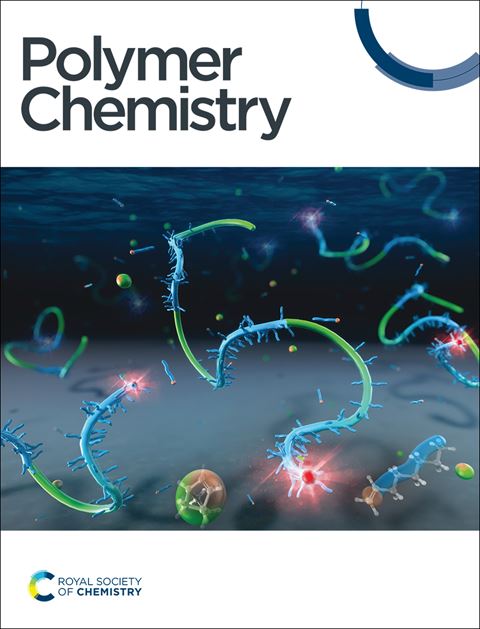Preparation and properties of stretchable low temperature resistant flexible epoxy resin curing agent
IF 4.1
2区 化学
Q2 POLYMER SCIENCE
引用次数: 0
Abstract
Two innovative molecular design strategies for epoxy curing agents to address the inherent brittleness and cryogenic limitations of conventional epoxy systems are introduced. A silane-modified curing agent (DETA-Si) and a flexible-chain-engineered curing agent (NBOn) were synthesized to achieve unprecedented mechanical–electrical–thermal synergies. The DETA-Si/EP composite demonstrates a record-breaking elongation at break of 125% (22× improvement over unmodified systems) while maintaining ultralow dielectric loss (tan δ < 0.04) and thermal stability (Td = 236 °C). The NBOn series, incorporating rigid benzene rings and tunable aliphatic chains, exhibits exceptional cryogenic resilience: 18% elongation at 298 K with >50% ductility retention after 24-hour immersion in liquid nitrogen (77 K). Conductive composites cured with EP/NBO10 show stable resistance (±5%) under 30-day cryogenic exposure. Free volume engineering, validated via WLF modeling, underpins the enhanced low-temperature performance. These advancements establish a paradigm for epoxy resins in flexible electronics operating under extreme conditions, such as flexible sensors and polar climate devices.

可拉伸耐低温柔性环氧树脂固化剂的制备及性能研究
介绍了两种创新的环氧固化剂分子设计策略,以解决传统环氧体系固有的脆性和低温限制。合成了硅烷改性固化剂(delta - si)和柔性链固化剂(NBOn),实现了前所未有的机械-电-热协同效应。delta - si /EP复合材料的断裂伸长率达到创纪录的125%(比未改性的体系提高了22倍),同时保持了超低的介电损耗(tan δ <;0.04)和热稳定性(Td = 236℃)。NBOn系列,包含刚性苯环和可调脂肪链,表现出优异的低温回弹性:298 K时伸长率为18%,在液氮(77 K)中浸泡24小时后延展性保持50%。EP/NBO10固化的导电复合材料在30天的低温暴露下表现出稳定的电阻(±5%)。自由体积工程,通过WLF模型验证,巩固了增强的低温性能。这些进步为在极端条件下运行的柔性电子产品(如柔性传感器和极地气候设备)中的环氧树脂建立了典范。
本文章由计算机程序翻译,如有差异,请以英文原文为准。
求助全文
约1分钟内获得全文
求助全文
来源期刊

Polymer Chemistry
POLYMER SCIENCE-
CiteScore
8.60
自引率
8.70%
发文量
535
审稿时长
1.7 months
期刊介绍:
Polymer Chemistry welcomes submissions in all areas of polymer science that have a strong focus on macromolecular chemistry. Manuscripts may cover a broad range of fields, yet no direct application focus is required.
 求助内容:
求助内容: 应助结果提醒方式:
应助结果提醒方式:


